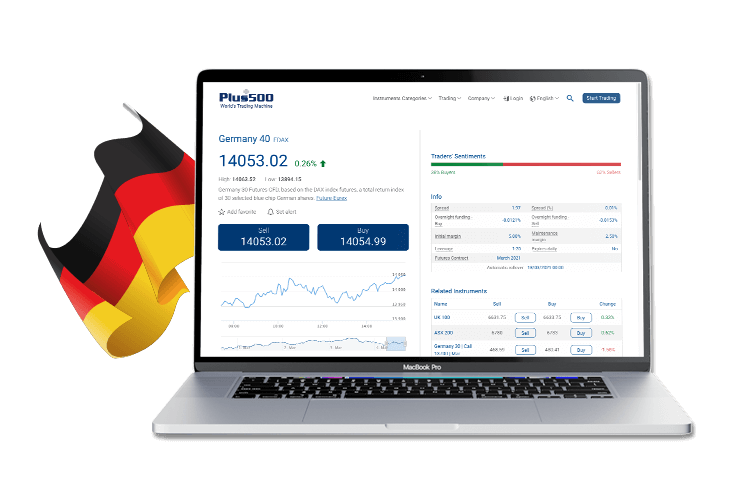What Causes the DAX to Move?
The DAX (Germany 40) consists of the 40 largest companies on the Frankfurt Stock Exchange.
The value of the DAX is calculated by an electronic trading system called Xetra, which weighs each company’s market capitalisation combined with their average trading volumes. This weighted figure serves as a snapshot that traders can use to track the index’s performance.

What are the top DAX companies?
DAX companies are chosen based on their Free Float-Adjusted Market Capitalisation, representing the total value of their openly traded shares. The rankings are adjusted every quarter.
The top 10 largest companies included on the DAX are:*
- SAP (SAP.DE) - A software company specialising in enterprise applications.
- Linde (LIN.DE) - An industrial gases and engineering company.
- Siemens (SIE.DE) - An international conglomerate and manufacturing company.
- Volkswagen (VOW.DE ) - A German multinational automotive corporation.
- Airbus (AIR.DE) - A multinational aerospace technology company.
- Merck (MRK. DE) - A health science and technology company.
- Deutsche Telekom (DTE.DE) - A telecommunication company.
- Allianz (ALV.DE) - A multinational financial services company.
- Daimler (DAI.DE) - A German multinational automotive corporation.
- Deutsche Post (DPW.DE) - A multinational package delivery company.

Illustrative prices.
What moves the DAX’s price?
The change in market value of each company included on the DAX index is weighted. This in turn determines what the index is worth on a daily basis.
For example, while SAP may have a larger market capitalisation than Linde, its impact on the index is capped at no more than 10% of the index totals. This way, the other 39 companies can still affect the listing’s valuation significantly, and ensures that a single company can have no more of an influence than what is warranted by the DAX’s overall values.
Once the market closes each day, the listed companies’ prices are calculated and placed into a determined formula, showing the top 40 companies’ overall daily movement. While the share price of some of the companies included on the index may have soared during that day’s trading sessions, others may have fallen. Traders can see if the index as a whole rose or fell based on the collective figure calculated at the end of the day.
This helps traders better evaluate the index’s movements and volatility over a period of days, weeks, months, or even years.
How do companies get onto the DAX index?
The Frankfurt Stock Exchange board, which calculates the DAX, meets to review company standings and market valuations every quarter. A company can be removed if it falls out of the top 45 largest companies, or it can be added once it breaks into the top 25.
The DAX’s movements are an overall snapshot of the day’s trading activity amongst all 40 companies. Its weighted valuation can rise even if the shares of some companies included on the DAX go down in price. Likewise, when some of the included companies see a rise in share prices, the index as a whole can still fall.
*Largest companies as of October 2021.
